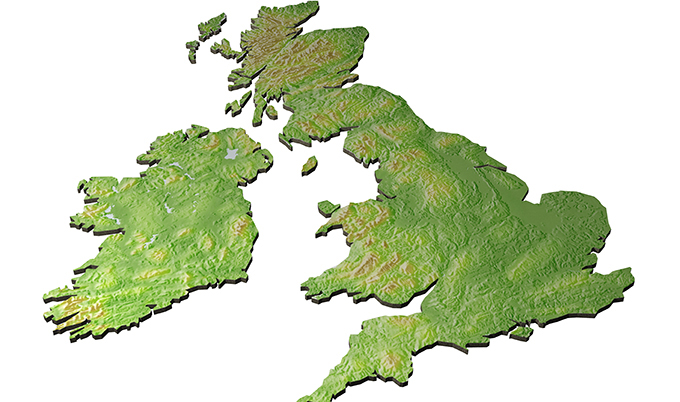Comment: How the EU smoothed Irish/UK relations
Comment: How the EU smoothed UK and Irish relations
Published on: 9 June 2016
Writing for The Conversation Dr Colin Murray discusses the role the EU played in smoothing relations between London and Dublin.

When Ireland’s prime minister, or Taoiseach, Enda Kenny, spoke glumly in January of the “serious difficulties” a British exit from the European Union would create for Northern Ireland, the veteran unionist politician David Trimble was incredulous: “There’s absolutely no connection between the peace process and the European Union.”
But on June 6, UK Chancellor George Osborne said that in the event of a Brexit, the end of Europe’s financial support for the peace process would contribute to a profound “economic shock” for Northern Ireland.
In May, the House of Commons Northern Ireland Affairs Committee, a body well-stocked with high-profile Brexiteers, was content that the relations between London, Dublin and Belfast would “continue to be very strong” even if the UK left the EU. In a report on the issue, they maintained that the EU has been less important for conflict resolution than the United States.
Bruising border relations
Prior to 1974, partition had long overshadowed the UK’s relations with Ireland. In 1956, the Northern Ireland government produced Why the Border Must Be, a staunch defence of partition capped by a grudging recognition that “although Ulster and Eire cannot unite, they can be good neighbours”.
But in spite of the UK and Ireland’s Free Trade Agreement in 1965, and the meetings that year between the Taoiseach Seán Lemass and the Ulster Unionist prime minister of Northern Ireland, Terence O’Neill, official interactions remained limited.
As the UK remained Ireland’s biggest market, it was all but obliged to follow the UK’s efforts to join the then-European Economic Community (EEC) in the 1960s. With the onset of the Troubles, UK-Ireland relations became entangled within the increasingly bloody conflict. In 1971, Ireland challenged the UK’s use of “enhanced interrogation” practices to get information out of internees as amounting to torture before the European Court of Human Rights. Archival releases show that UK officials regarded this response as tantamount to “a diplomatic declaration of war”.
Shared objectives
EEC membership in 1974, however, brought a new dimension to this fraught relationship. Ireland and the UK, as English-speaking islands on Europe’s north-west periphery, shared many interests in terms of European policy. European summits obliged ministers from both countries to participate in the communal “family photographs” and enabled them to forge working relationships in a context less burdened with expectation than the intermittent bilateral meetings of the 1970s.

In 1980, at a time when UK prime minister, Margaret Thatcher, and then Taoiseach Charles Haughey, remained cagey about dealing with each other, the EEC summit in Venice offered a forum for both to address pressing concerns regarding the security situation in Northern Ireland and build up good will.
By the mid-1980s, the Haughey-Thatcher relationship had soured. Their mutual distrust and the shock of the Hunger Strikes by republican prisoners held at the Maze limited the possibility for an inter-govermental process and made the conflict appear as intractable as ever.
At this juncture, the leader of Northern Ireland’s Social Democratic and Labour Party, John Hume, was instrumental in securing the European Parliament’s Haagerup Report into the conflict in Northern Ireland. The report approached the conflict as a clash of national identities and conceived of Europe’s role as supporting the UK and Ireland in their efforts to promote peaceful expression of these identities within Northern Ireland. As such, it provided a starting point for the 1985 Anglo-Irish Agreement negotiations.
The peace process
The Haagerup Report also emphasised the need for Europe to support these efforts with funding. The Northern Ireland Affairs Committee’s recent report makes out that Europe was late to the party, providing funding through its PEACE initiative (now in its fourth cycle) only after the peace process was under way.
But by focusing only on one stream of funding, the committee deliberately downplays Europe’s intense regional development funding in Northern Ireland since the 1970s and payments into the International Fund for Ireland in the 1980s. The four cycles of PEACE funding alone have provided Northern Ireland with over €2 billion, three-quarters of which has come from the EU.
The UK and Ireland’s shared EU membership was emphasised in the 1998 Good Friday/Belfast Agreement, building on previous references in the Anglo-Irish Agreement. The need to implement EU law provides one of the agreement’s major conduits for co-operation between Belfast and Dublin. The responsibility of the North-South Ministerial Council, set up after the Good Friday agreement, for discussing harmonious approaches to the implementation of EU law in both parts of the island of Ireland provides much of its workload.
The peace process will not implode in the event of Brexit, nor will Ireland’s close relations with the UK degrade overnight. Nonetheless, the EU’s role in building this relationship should not be forgotten. Whereas the European project drew Ireland and the UK closer together, Brexit would impose new strains on the relationship.
Ireland’s trade with the rest of Europe has dramatically increased since 1974, making its economy less dependent upon the UK for imports and exports. But in purely economic terms it will still be the EU country most affected by Brexit. Over time, Ireland’s increasing integration with Europe would likely put it at odds with a UK which is no longer playing on the same team. In that event, the mutual trust which has provided the bedrock for the peace process will inevitably be under threat.
Colin Murray, Senior Lecturer in Law, Newcastle University
This article was originally published on The Conversation. Read the original article.



